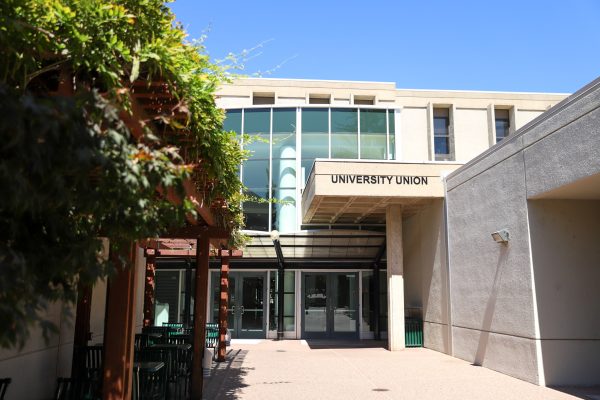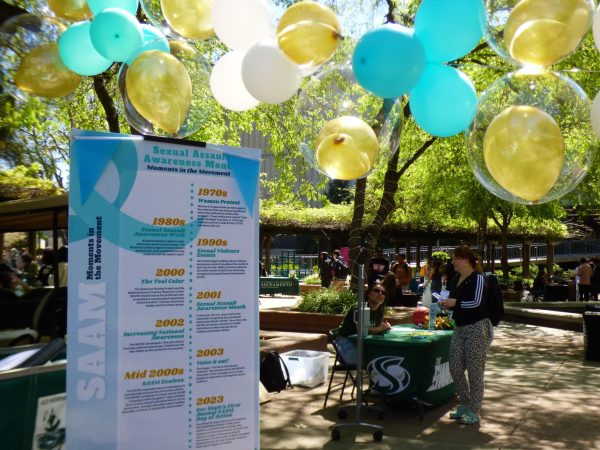Art used for rebuilding
September 29, 2010
When Sara Garzon looked to her future she saw a major predicament that she would have to overcome. The senior art history major, like others in her field, has the option of finding a job or attending graduate school after her senior year.
While many students face this dilemma, Garzon said art history majors have it especially tough because students who seek jobs in their field often have problems getting hired without a master’s degree, and those who want to apply to graduate school have a hard time getting in without any job experience.
Garzon decided to take her fate into her own hands and got together with her fellow classmates Hannah Daniel-Beck, junior art history major, Claudia Castaneda and Susanna Tu, Sacramento State alumnae, to create a project called “Exploring the Power of Art,” where she could get real-life experience.
The project will help provide more opportunities for students in the art field, by giving them a chance to develop work experience and opportunities to learn from professors who are already experienced.
The project will also serve as an experiment to research art’s effects on reconstructing a society that has been subjugated to different forms of coercion or oppression.
Throughout history, art has been an essential part of countries rebuilding themselves, Garzon said.
“The United States government used art as a strategy to help its society get out of the Great Depression by funding artists to create art,” she said. “Mexico used it as well to recreate a Mexican identity when they gained independence.”
Garzon said art has the power to reconstruct in two ways: when people use art as an exercise and when art affects the artist.
“In a marginalized society, people feel like society has turned its back on them,” she said. “Art is a tool to make them feel recognized, and gives them power in validation.”
An artist’s piece of art helps him or her integrate into society because they produce something universal that is accepted by everyone, Garzon said.
Creating art helps artists develop an understanding of their situation – that understanding turns into awareness and that awareness turns into action, Garzon said.
“Action is the ability to change someone else’s situation, by doing something as small as changing their attitude because you provided a new perspective,” she said.
Defining the two ways art could reconstruct a society was just the first step in beginning the experiment, Garzon then created a three step plan, which includes a symposium, a workshop and an exhibit to test her theory.
The dates of these events have yet to be set.
She said although art cannot be measured in a tangible way, one could explore what aspects of art bring about more emotion than others.
The first step, the symposium is set to place at Sac State.
The symposium would stand as an encounter of experienced artists, historians and professors, who preferably have done some research in regards to art reconstructing societies. The panel would compare models of art and see which were successful and which failed, Garzon said.
“When you look at that, then you can tangibly measure the effectiveness (of art),” she said.
The symposium will focus strictly on the Americas.
Castaneda said in the workshop, two youth groups from different demographic backgrounds will be invited to come and create their own art.
Garzon said sometimes people define themselves by a certain race, and when looking at other races people fail to see the commonalities that connect us all.
“The workshop uses art to help us detect the things we have in common that makes us human and separates us from individual labels,” Garzon said.
Finally, the last step will be an exhibit displaying photography from various artists. Their photos will display life in Latin America. The photos will provide an insight in understanding lifestyles of those who live in poverty in Latin America with a historical background.
The works of Cuban photographer Gilda Perez and Mexican photographer Jeronimo Arteaga will be displayed at the Blue Line Gallery in Roseville.
Garzon said poverty is expressed through the lack of opportunity and that was what would be seen in these pictures.
“These people are deprived of basic human needs like food and education,” she said, “they are so involved in getting those basic needs that it prevents them progressing as individuals.”
Despite the limitations placed on these people, there is energy and encouragement to live and put up with everyday life, the spirit of the Latino people is evident in the photography, Garzon said.
Through this project the group has been able to create a non-profit organization where it has set up a platform to have students come up with ideas and then be able to execute them just as Garzon set out to do, Castaneda said.
Daniel-Beck said donations to the organization can be made soon on its website, www.sacramentoarthistory.org.
“We have someone working on getting donations up on the side,” she said.
Castaneda encourages everyone to participate in the upcoming project as well as in future events.
“Art is the one thing where people from all walks of life can relate to it, you don’t have to be an art history major to do so,” she said.
Miriam Arghandiwal can be reached at [email protected]








































































































































